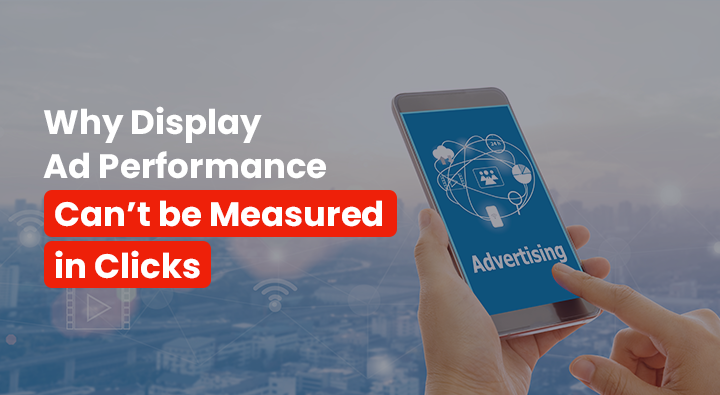Advertisers are often at sea when it comes to measuring display ad performance and return on investment (ROI) on display and video advertising. The good news is that you’re not alone.
For decades, advertisers have spent a lot of money on advertising through channels like television, radio, newspapers, billboards, etc. It is difficult to measure the effectiveness of these modes of advertising, but brands, big or small, have done it still. So, there must be something about these channels that work for them, right?
Similarly, even though it’s difficult to measure the immediate results of digital display ads, such ads are gaining popularity! Big businesses like General Motors, IBM, McDonald’s and Apple are increasingly spending on display advertising.
Since there is limited data available to determine the actual contribution of display and video ads to marketing objectives, let’s try to find evidence in advertising patterns and behaviors of some big companies to understand why such ads are popular and how they can help achieve your business objectives.
In this article, we will try to throw light on why measuring display ad click-through rate, clicks and measurable conversions don’t do justice to your display advertising efforts.
A. How Display ad performance was measured in the past
To understand how online display ads help advertisers and should be measured, let’s first look at their close predecessors–Newspaper, billboards, TV, Yellow pages, magazines, and radio.
There were no reliable methods or display advertising KPIs to measure the success or effectiveness of these traditional advertising channels. This, however, did not stop advertisers and big companies from advertising through them.
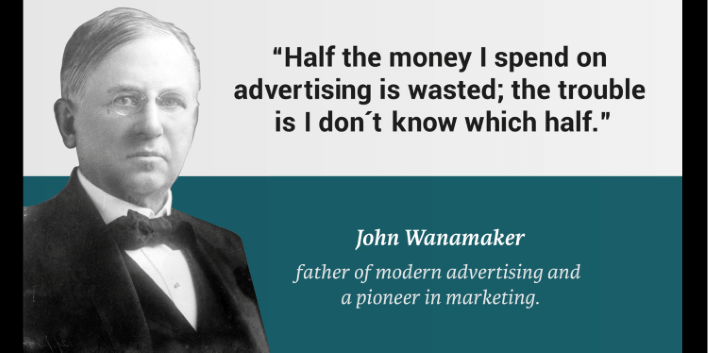
Is it worth spending money on a form of advertising if its conversion can’t be measured? Well, history has it–time and again advertisers have talked about not being able to measure conversions from ads, and yet large chunks of budgets have been allotted to them.
For digital display advertising, the idea, like traditional advertising, is to not get instant conversions as you get with paid search advertising. The reason is–display ads are intrusive. They are shown to users when they are not actively looking for your products. Users usually come across display ads when they are reading or watching something. Therefore, customers do not immediately click or act upon them.
For example, how many times do you pause watching a basketball game after watching an iPhone ad to order an iPhone? Not very often, right? You also won’t, generally, rush to buy a new pair of Levi’s jeans in the middle of an episode of Game of Thrones. You, however, might add it to your shopping list or remember to buy Levi’s when buying a pair of jeans next time. The result is delayed and indirect. Therefore, it’s not the immediate ROI but the life-time value (LTV) of customers that matters.
Display ads may not generate immediate conversions, but they can plant a seed in the minds of the users to consider a purchase later. They create brand and product awareness and recall, which may reflect in:
- Increased sales (online and offline)
- Higher store footfall
- More website visitors
- More query calls
These changes may or may not be immediate. You might not instantly stop reading the daily news to click on a Michelin tire display ad to make a purchase, but there is a high chance that you will remember the brand name when you think of buying tires a week later.
Data shows that even though no immediate results could be recorded, major companies continued to invest in various forms of display advertising, as they helped grow businesses.
B. Why comparing digital display metrics with Google search ads is futile?
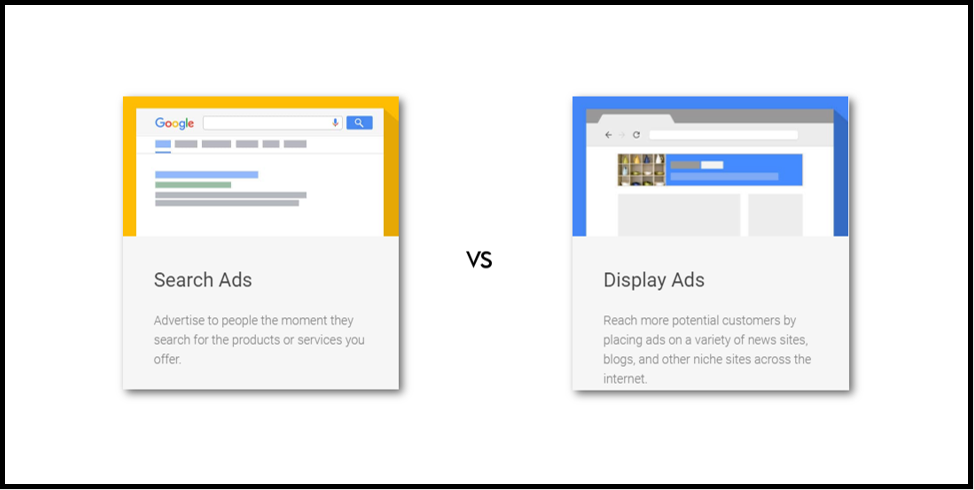
As most advertisers’ first interaction with digital advertising is through Google Ads, their expectation is to see measurable results for all the digital advertising tactics including display advertising.
Note that Google search Ads reach only the users who are actively looking for your products and services, as they are action-based ads. These are low-funnel, action-based ads, hence, can be easily measured based on their immediate results.
Traditionally, Yellow pages and newspaper coupons served as action-based advertisements. With yellow pages, you could measure how many people called using a call tracking number.
Display advertising metrics are wider in scope. Display ads are top-funnel, visuals-based ads that help create awareness about the product and services before the users move on to consideration, engagement and conversions stages of the sales funnel. Visuals-based advertising also includes traditional banner, television, and newspaper ads.
Many advertisers expect Visual ads to give comprehensive metrics that Google search ads offer–impressions, clicks, click-through rate (CTR), cost per click (CPC), conversions, conversion rate, cost per conversion, actions, cost per action, view-through conversions, number of calls, transactions, sales value, return on investment.
Display and video ads cannot be fully measured in such a straightforward way. Visual ads may or may not result in immediate actions and conversions, but they influence user’s decisions and their brand perception and positioning.
It is a common perception that if it’s digital, it can be measured. However, we often leave out the unpredictability of human behavior while measuring the effectiveness of display ads. Often, users do not immediately act upon a marketing message. They take time to process it and take action when they’re ready.
For performance display marketing ads, you can measure impressions, clicks, click-through rate, view-throughs, conversions, etc., but besides these, there are variables like brand influence, product awareness, brand recall, etc. that can’t be measured but lead to online and offline conversions over time.
C. Objectives Fortune 500 and other companies aim to achieve with display ads
1. Apple’s product-launch campaigns use the concept of ‘less is more’ to show simple and powerful imagery with a clear message and call to action.
Objectives/ KPI Display: Product awareness and sales (website traffic and store visits)
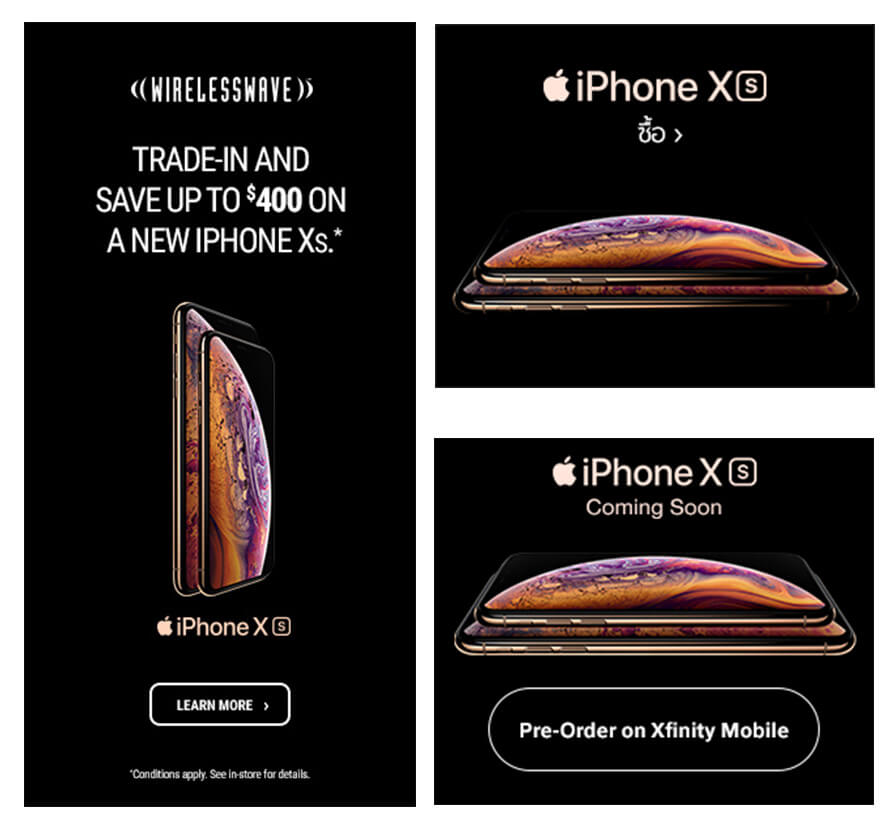
2. McDonald’s launched a fun display ad campaign for the launch of its new quarter pounder deluxe burger. The interactive display ad invited users to click on the burger to ‘make it better’.
Objectives/ KPI Display: Product awareness and website traffic

3. MailChimp’s‘Did you mean Mailchimp?’ campaign gained 988 million impressions and 67 million organic searches. They used creative ad copy to build curiosity among users.
Objective/ KPI Display: Brand Awareness

4. Amazon Prime launched a simple display campaign with a powerful message explaining the benefit of their product.
Objectives/ KPI Display: Website traffic and Sign-ups
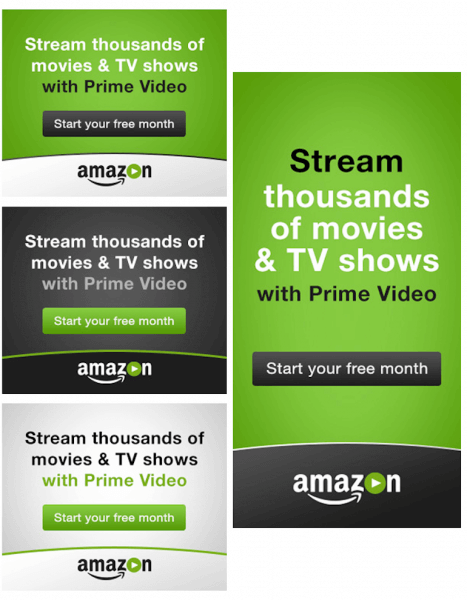
5. Cisco used powerful imagery and a message that made an emotional connection with the audience.
Objectives/ KPI Display: Website traffic and Sign-ups

D. Measuring Display Advertising (Average CTR for Display Ads and More)

Measuring display advertising is possible with various display ad metrics like CTR, impressions, and conversions. However, to get a wholesome picture of your display ad performance, here’re some display advertising KPIs you should track. The list includes brand campaign KPIs (brand awareness KPI metrics), conversion KPIs and return KPIs.
- Impressions: As a KPI, impressions measure brand/product awareness and influence. It’s the number of times your ad was viewed online. Impression metrics measure the reach of your campaign.
The effect of an ad on users who view your ads is broken down into two components–measurable and unmeasurable.
Unmeasurable effects of the campaign include brand and product awareness and recall. The user may not immediately buy the product/service, but they will remember the Cisco ad, the next time they need cybersecurity services.
Measurable effects of a campaign include immediate conversions like leads, form fills, phone calls, online sales, store visits. - Reach/Viewers: This is the number of unique users who saw your ads. Higher reach leads to more conversions and brand awareness. Impressions and reach/viewers are good awareness KPIs.
- Ad Engagement metrics: Here are a few metrics that show that your ads were attractive enough to capture the attention of users who viewed them.
– Hover over an ad
– Click to play video
– Click to listen to audio - View-throughs: These are users who view your ads and do not click on them, but return to your website directly or through organic search. Brand campaign KPIs often include view-throughs to measure a campaign’s contribution to brand recall.
- Website engagement metrics: To measure how relevant your ads are for users, you can measure the following metrics for your ads using analytics for display advertising:
– Bounce rate
– Pages/Session
– Session duration - Conversion potential: Set up goals using your display ad platform to understand the exit or conversion points of your users.
- Lead button click: Measure how many people clicked on a button that reflects their interest in purchasing. For example, how many people clicked on ‘Proceed to cart’ button.
- Lead form page view: Measure how many people visited the checkout or contact us page. Compare this to the number of actual conversions to know how engaging your checkout or contact us pages are or how convenient your purchase and payment processes are.
- Conversions and View-through Conversions: For performance display advertising,measure immediate and view-through conversions like display ad conversion rate, Leads, Online sales, Phone calls, and Store visits.
Average conversion rate for display ads for all the industries ranges between 0.41% to 0.96%.
a) Return: For display ads, measure two types of returns–ROI and LTV.
b) ROI is the total revenue a campaign generates minus the total running cost of the campaign.LTV is the net profit you earn from a customer over their lifetime. Use an LTV model that suits your business model.LTV = (Avg. margin per order x repeat sales frequency x avg. retention timeFor example,
LTV = ($200 x 0.5 purchases per month x 6 months) = $600
- The Un-measurables: Besides everything you can measure, display ads always tend to have components that can’t be measured and lead to conversions offline or later in time:
– Brand/product awareness
– Brand/product recall
– Brand positioningTo roughly measure the effect of the unmeasurable component of display ads, measure year-on-year changes in:
– Offline and online sales
– Website traffic
– Store footfall
Next time you assess your display advertising performance metrics, remember to ask your digital marketing agency to help obtain all the measurable data like impressions and average CTR for display ads. Combine that with your year-on-year sales, website traffic, and store footfall data to ascertain the contribution of display advertisement to your business.
Learn more about B2B lead generation strategies.

